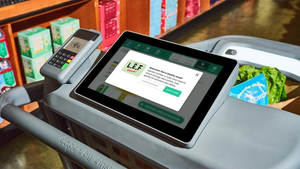Sounding Board: The universal language of medicine
January 1, 2018
The pharmacy offers a great opportunity for retailers to attract—and interact with—a diverse customer base. Walk the aisles of any store these days and you might hear 50 different languages and dialects, not to mention different cultural idiosyncrasies. However, with all the talk about ethnic marketing over the past couple of decades and the unending mantra about meeting the needs of an increasingly diverse customer—are we? There are exceptions to every rule. But I wonder whether the retail industry at large is making “the cultural connection.” A case in point is the pharmacy, which is rapidly becoming a place to practice “multi-cultural medicine.” The key is fostering closer relationships between customers and pharmacists—respected professionals who could supply people not only with prescription drugs, but also information on alternative medicines and even lifestyle-changing foods. No one really knows what the impact of the Supreme Court’s decision upholding Obamacare will be, but it is clear retail can play a larger role. An interesting retail spin was discussed in a recent study by Global Advertising Strategies, a New York-based marketing research firm that explored the relationship between Hispanic consumers and their pharmacists. I have seen this time and again at different stores, even with more acculturated customers. Whether they speak Spanish, Hindi or Chinese, the relationship between them and their pharmacists is a personal one based on trust. For them, pharmacists are far more accessible and affordable than physicians. In fact, with primary care doctors said to be in relatively short supply, pharmacists at chains such as Walgreens are becoming increasingly proactive when it comes to counseling patients. The chain, which already offers private counseling with pharmacists, is now bringing them out from behind the counter to interact with customers. CVS Caremark last year introduced its Pharmacy Advisor program to help customers who have diabetes or heart disease. Granted, neither of these programs focus on food and they are not being done specifically for ethnic customers. But it is interesting to consider the possibility that this new and closer relationship could steer patients of different cultures toward more healthful food choices. Health care beliefs of Hispanics, who are likely to represent about 30% of the U.S. population by 2050, are closely tied to their cultural background. As the Global Advertising Strategies report noted, they prefer interpersonal relationships with health care practitioners who, in their home countries, are usually licensed pharmacists. This leads to “respeto,” or respect, for these health care professionals. Hispanics not only look to them to fill prescriptions, but for guidance about purchasing holistic or alternative remedies. This cultural attitude can be traced back to their home countries where, more often than not, Hispanic patients will describe their symptoms to pharmacists and receive medications based solely on their advice without even consulting a physician. According to the report, “As pharmacies carve out new and expanded roles in the health care delivery system, their ability to educate, inform, guide and recommend is now stronger than ever.” I am not suggesting that pharmacists come out from behind the counter and start selling organic produce or whole grain pasta. However, there is an evolution taking place and an opportunity to do some supportive suggestive selling. Most consumers do not spend a lot of time standing around reading labels. This is doubly true for whom English is a second language. Regular store personnel like clerks and managers can help customers find categories and even specific products. But why not have more knowledgeable people from the pharmacy adopt the role of food advisors—steering people to foods that might improve their physical well-being. Perhaps more importantly, pointing out which foods to avoid if they suffer from heart diseases, diabetes or other ailments. This would go a long way toward breaking down cultural barriers, bridging the gap between retailers and multi-cultural customers and creating loyalties that can last for generations. Len Lewis, a regular Grocery Headquarters columnist, is a veteran industry journalist, commentator and editorial director of Lewis Communications, Inc. He is the author of The Trader Joe’s Adventure—Turning a Unique Approach to Business into a Retail and Cultural Phenomenon. He can be reached at [email protected] or at www.lenlewiscommunications.com.
About the Author
You May Also Like




